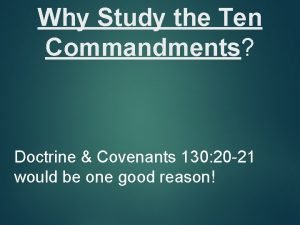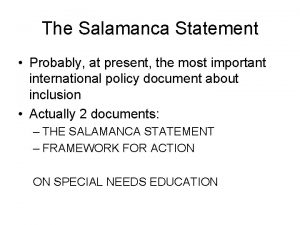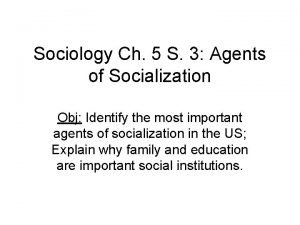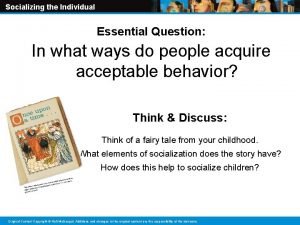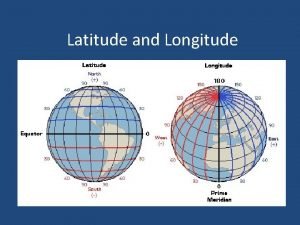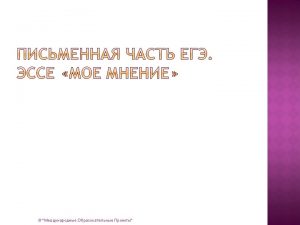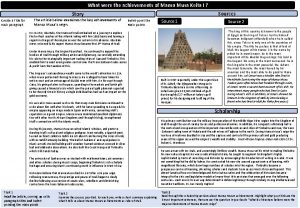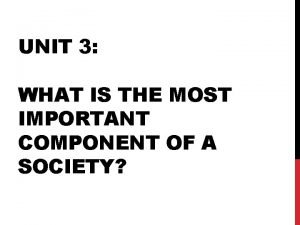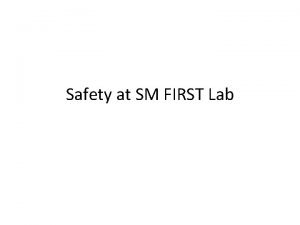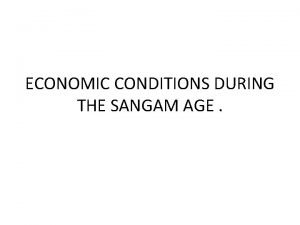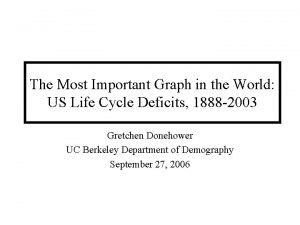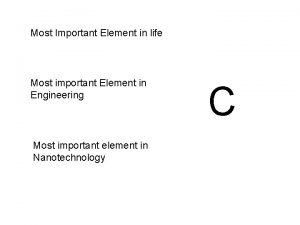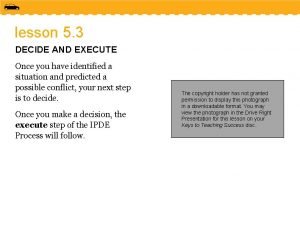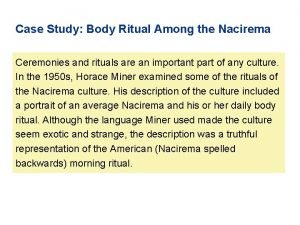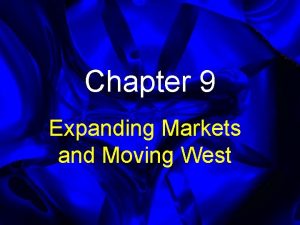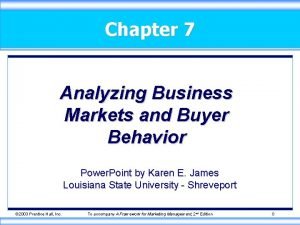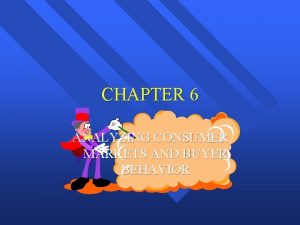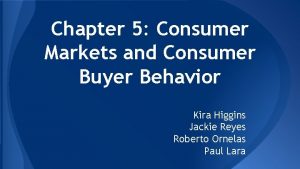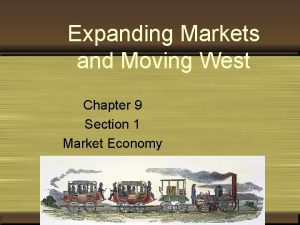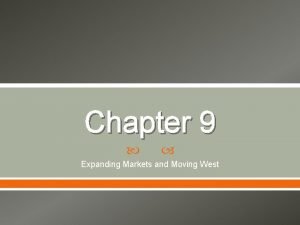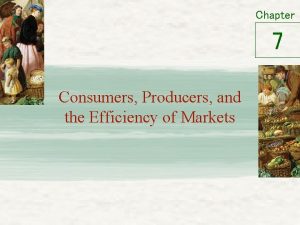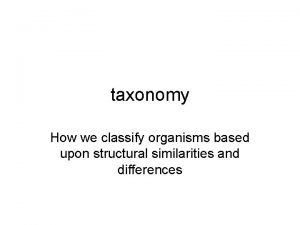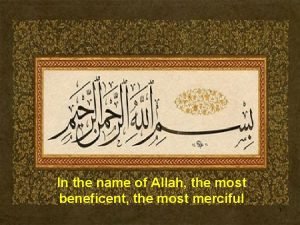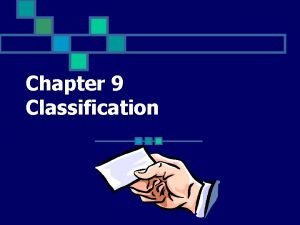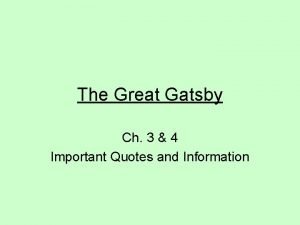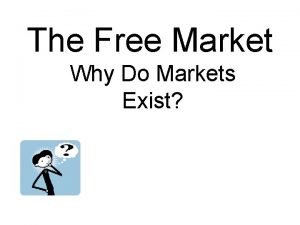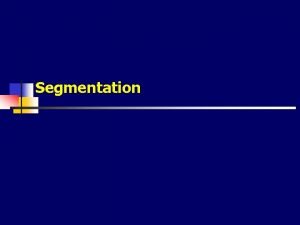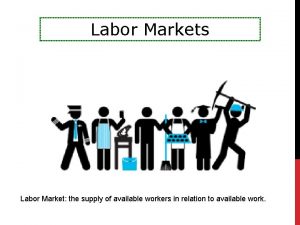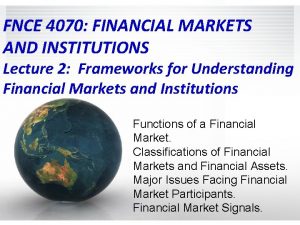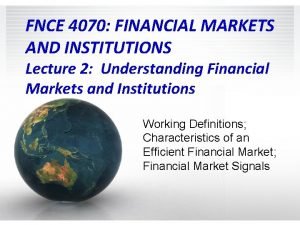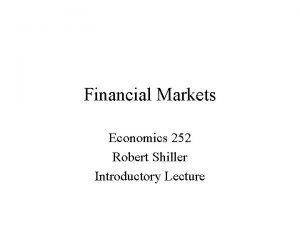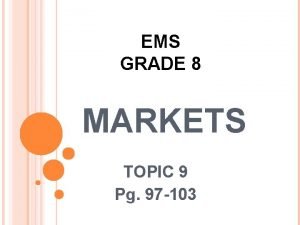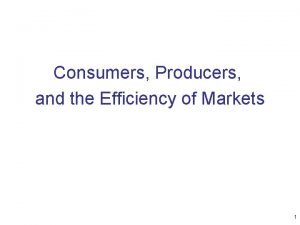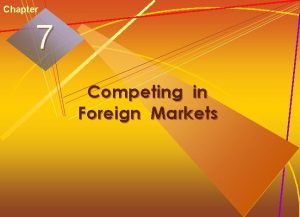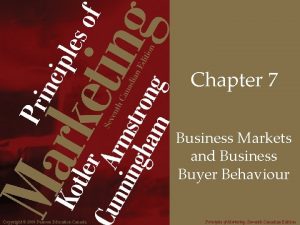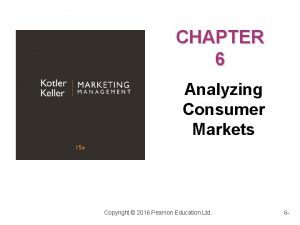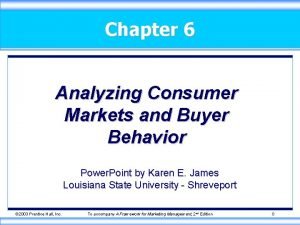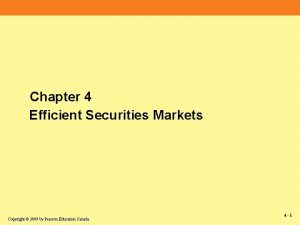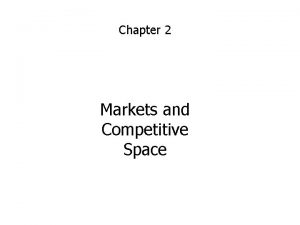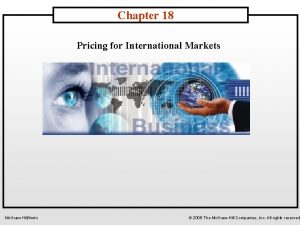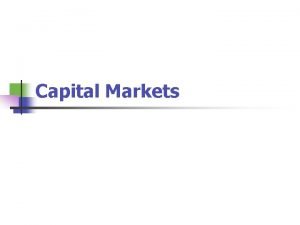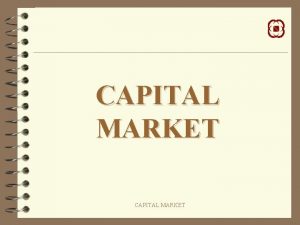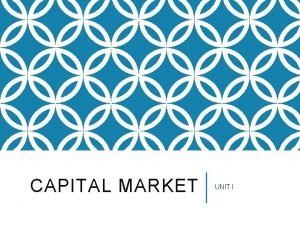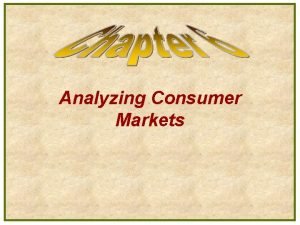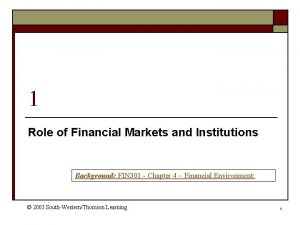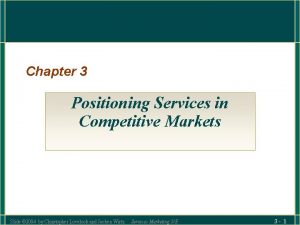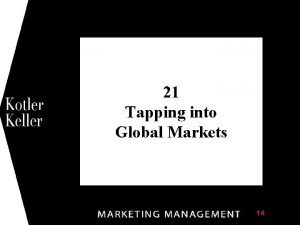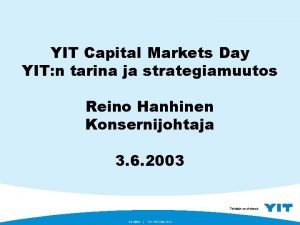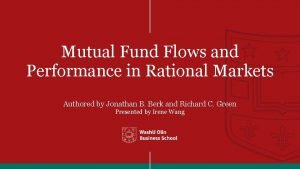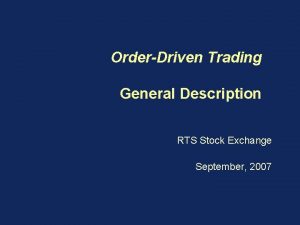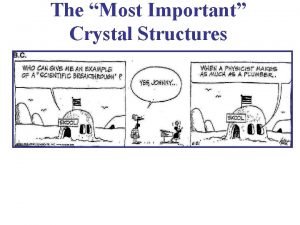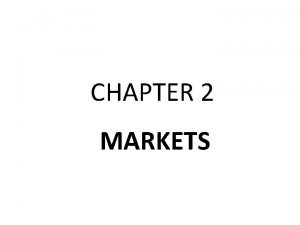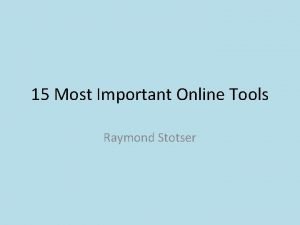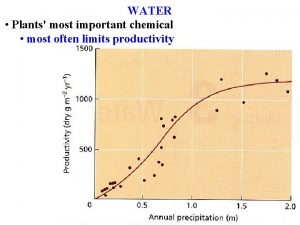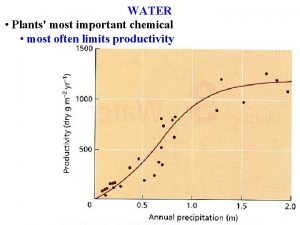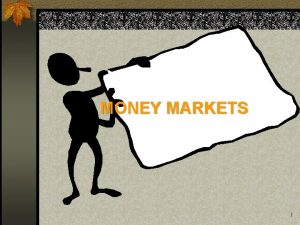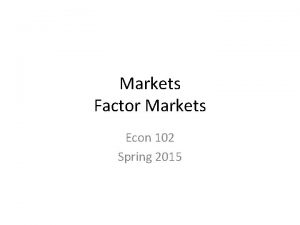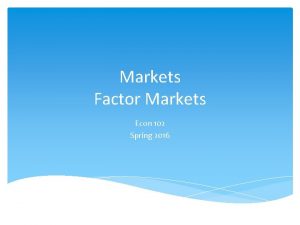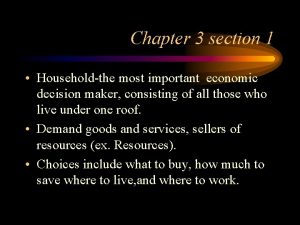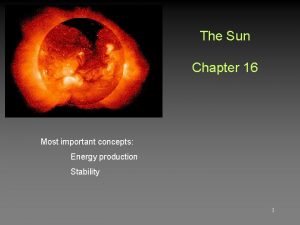Chapter 6 Orderdriven Markets Orderdriven markets Most important











































































































- Slides: 107

Chapter 6 Order-driven Markets

Order-driven markets Most important exchanges are orderdriven markets. Ø Most newly organized trading systems are electronic order-driven markets. Ø All order-driven markets use order precedence rule and trade pricing rule. Ø

Examples of pure order-driven markets - Tokyo Stock Exchange, - KRX (previously KSE, KOSDAQ) - Paris Bourse, - Toronto Stock Exchange, - Most Future Markets, - Most European Exchanges for equities (Milan, Barcelona, Madrid, Bilbao, Zurich, …. )

Types of order-driven markets Ø Oral auctions Ø Rule-based order matching systems Single price auctions • Continuous order book auctions • Crossing networks •

In order-driven markets, trading rules specify how trades are arranged: - order precedence rules: match buy orders with sell orders 1. Price priority 2. Time precedence or time priority trade price rules: determine the trade price 1. Uniform pricing rule (single price auction) 2. Discriminatory pricing rule -

Oral auctions Ø Used by many futures, options, and stock exchanges. • Ø The largest example is the US government long treasury bond futures market (CBOT, 500 floor traders). Traders arrange their trades face-to-face on an exchange trading floor. • • Cry out bids and offers (offer liquidity) Listen for bids and offers (take liquidity) “Take it” = accept offer “Sold” = accept bid

Ø Open outcry rule – the first rule of oral auctions Traders must publicly announce their bids and offers so that all other traders may react to them (no whispering…). • Traders must also publicly announce that they accept bids/offers. • Why is this necessary? •

Ø Order • Price priority n • precedence rules Should a trader be allowed to bid below the best bid, above the best ask in an oral auction? Time precedence Is time precedence maintained for subsequent orders at the best bid or offer? Why not? n How can a trader keep his bid or offer “live”? n The minimum tick size is the price a trader has to pay to acquire precedence. n • Public order precedence n Why do you think this is necessary?

Ø Trade pricing rule Trades take place at the price that is accepted, i. e. , the bid or offer. • Discriminatory pricing rule in oral auction. n Why do you think it is called discriminatory? •

Ø Trading floors • Trading floors can be arranged in several rooms as on the NYSE, with each stock being traded at a specific “trading post. ” • Trading floors can also be arranged in “pits” as in the futures markets.

Rule-based order-matching systems Used by most exchanges and almost all ECNs. Ø Trading rules arrange trades from the orders that traders submit to them. Ø No face-to-face negotiation. Ø Most systems accept only limit orders. Ø • Why do you think most systems are reluctant to accept market orders?

Orders are for a specified size. Ø Electronic trading systems process the orders. Ø Trades may take place in a call, or continuously. • A new order arrival “activates” the trading system. Ø Systems match orders using order precedence rules, determine which matches can trade, and price the resulting trades. Ø

Order precedence rules ØPrice • • • priority Market orders always rank above limit orders. Limit buy orders with high prices have priority over limit buy orders with low prices Limit sell orders with low prices have priority over limit sell orders with high prices.

ØTime precedence • Under time precedence, the first order at a given price has precedence over all other orders at that price. Gives orders precedence according to their time of submission. • The pure price-time rule uses only price priority and time precedence. • Floor time precedence to first order at price. All subsequent orders at that price have parity (Oral auction)

Ø Display • Why do markets use display precedence? Ø Size • precedence Some markets give precedence to small orders, other markets favor large orders (NYSE). Ø Public • precedence order precedence Public orders have precedence over member orders at a given price.

Ø Trades are arranged by matching the highest ranking buy orders with the highest ranking sell orders. Ø Order precedence rules are used to rank orders. Ø Order precedence rules vary across markets. However, the first rule is almost always price priority.

Trade pricing rules Single price auctions use the uniform pricing rule. Most continuous orderdriven markets use the discriminatory pricing rule.

Uniform pricing rule Ø All matched orders are executed at the same price. Ø This rule is used for opening markets in many equities markets, following trading halts for many continuous markets, and in the AZX, ….

Discriminatory pricing rule Ø In a continuous market trade takes place when an incoming order is matched with a standing limit order. Ø Under the discriminatory pricing rule, the trade price is the limit price of the standing limit order.

Example – Pure price-time precedence Time Trader Buy/Sell Size Price 12: 02 Sammy Sell 100 $20. 05 12: 06 Steve Sell 200 $20. 06 12: 15 Bern Buy 500 $20. 06 12: 16 Susie Sell 300 $20. 08 12: 20 Ben Buy 200 Infinite 12: 21 Bob Buy 100 $20. 08 12: 24 Sandy Sell 500 $20. 12 12: 25 Bev Buy 500 $20. 08 12: 27 Bill Seth Buy Sell 200 $20. 05 $20. 10

Example – the order book Sellers Buyers Trader Sammy Steve Size 100 200 Susie Seth Sandy 300 200 500 Price $20. 05 $20. 06 $20. 08 $20. 10 $20. 12 Infinite Size 200 500 100 500 Trader Bill Bern Bob Bev 200 Ben

Clearing the order book with a call at 12: 30 Sellers Trader Sammy Steve Susie Seth Sandy Buyers Size 200 500 100 500 200 Size Price 100 0 $20. 05 200 100 0 $20. 06 $20. 08 300 0 $20. 08 200 $20. 10 500 $20. 12 Infinite 200 0 Trader Bill Bern Bob Bev Ben

Trades in the example - call Buyer Seller Quantity Price? Ben Sammy 100 Ben Steve 100 Bob Steve 100 Bev Susie 300 Infinity, $20. 05 Infinity, $20. 06 $20. 08

Example–the order book after the call Sellers Buyers Trader Size Price $20. 05 $20. 06 $20. 08 Size 200 500 200 Seth Sandy 200 $20. 10 500 $20. 12 Trader Bill Bern Bev

Example - What should be the price/prices? Possibilities include: • Infinite • $20. 05 • $20. 06 • $20. 08 Ø The price/prices depends on the trade pricing rules. Ø

What should be the price/prices? Ø Single price auctions use the uniform pricing rule: • Ø Continuous two-sided auctions and a few call markets use the discriminatory pricing rule. • Ø Everyone gets the same price. Trades occur at different prices. Crossing networks use the derivative pricing rule. • The price is determined by another market.

Uniform pricing rule Ø All trades take place at the same “market clearing price. ” • The market clearing price is determined by the last feasible trade. n Matching by price priority implies that this market clearing price is also feasible for all previously matched orders.

n In Example 1, the last feasible trade is between Bev and Susie, so the market clearing price is $20. 08. • Sam, Steve and Susie are happy with a market clearing price of $20. 08 since they were willing to sell at $20. 08 or lower. • Ben, Bob, and Bev are happy to with a market clearing price of $20. 08 since they were willing to buy at $20. 08 or higher.

Ø If the buy and sell orders in the last feasible trade specify different prices, the market clearing price can be at either the price of the buy or the price of the sell order. Ø The trade pricing rules will dictate which one to use.

Supply and Demand Ø The single-price auction clears at the price where supply equals demand. • At prices below the market clearing price, there is excess demand. • At prices above the market clearing price, there is excess supply.

Ø Single price auctions maximize the volume of trading by setting the price where supply equals demand. • Because prices in most securities markets are discrete, there is typically excess demand or excess supply at the market clearing price. • In the Example, what is the excess demand or supply?

Ø The single price auction also maximizes the benefits that traders derive from participating in the auction. • Trader surplus for a seller = the difference between the trade price and the seller’s valuation • Trader surplus for a buyer = the difference between the buyer’s valuation and the trade price. • Valuations are unobservable, but we may assume that they at least are linked to limit prices.

Example: Demand Supply

Discriminatory Pricing Rule Ø Continuous two-sided auction markets maintain an order book. • The buy and sell orders are separately sorted by their precedence. n The highest bid and the lowest offer are the best bid and offer respectively.

• When a new order arrives, the system tries to match this order with orders on the other side. n If a trade is possible, e. g. , the limit buy order is for a price at or above the best offer, the order is called a marketable order. n If a trade is not possible, the order will be sorted into the book according to its precedence.

Discriminatory Pricing Rule Ø Under the discriminatory pricing rule, the limit price of the standing order dictates the price for the trade. Ø If the incoming order fills against multiple standing orders with different prices, trades will take place at multiple prices.

Continuous trading @12: 02 Sellers Trader Size Sammy 100 Buyers Price Size $20. 05 $20. 06 $20. 08 $20. 10 $20. 12 Infinite Trader

Continuous trading @12: 06 Sellers Trader Sammy Steve Size 100 200 Price $20. 05 $20. 06 $20. 08 $20. 10 $20. 12 Infinite Buyers Size Trader

Continuous trading @12: 15 Sellers Trader Size Sammy 100 0 Steve 200 0 Buyers Price $20. 05 $20. 06 $20. 08 $20. 10 $20. 12 Infinite Size Trader 500 200 Bern

Continuous trading @12: 16 Sellers Buyers Trader Size Price Sammy Steve Susie 100 0 200 0 300 $20. 05 $20. 06 $20. 08 $20. 10 $20. 12 Infinite Size Trader 500 200 Bern

Continuous trading @12: 20 Sellers Trader Sammy Steve Susie Size 100 0 200 0 300 100 Price $20. 05 $20. 06 $20. 08 $20. 10 $20. 12 Infinite Buyers Size Trader 500 200 Bern 200 0 Ben

Continuous trading @12: 21 Sellers Trader Sammy Steve Susie Buyers Size 100 0 200 0 300 100 0 Price $20. 05 $20. 06 $20. 08 $20. 10 $20. 12 Infinite Size Trader 500 200 Bern 100 0 Bob 200 0 Ben

Continuous trading @12: 24 Sellers Trader Sammy Steve Susie Size 100 0 200 0 300 100 0 Sandy 500 Price $20. 05 $20. 06 $20. 08 $20. 10 $20. 12 Infinite Buyers Size Trader 500 200 Bern 100 0 Bob 200 0 Ben

Continuous trading @12: 25 Sellers Buyers Trader Sammy Steve Susie Size 100 0 200 0 300 100 0 Sandy 500 Price $20. 05 $20. 06 $20. 08 $20. 10 $20. 12 Infinite Size Trader 500 200 Bern 100 0 Bob 500 Bev 200 0 Ben

Continuous trading @12: 27 Sellers Trader Sammy Steve Susie Size 100 0 200 0 300 100 0 Seth Sandy 200 500 Price $20. 05 $20. 06 $20. 08 $20. 10 $20. 12 Infinite Buyers Size 200 500 200 100 0 500 Trader Bill Bern Bob Bev 200 0 Ben

Summary continuous trading Buyer Seller Size Price Bid Offer $20. 05 x 100 $20. 06 x 100 Bern Sammy 100 $20. 05 Bern Steve 200 $20. 06 x 200 Ben Bob Susie 200 100 $20. 06 x 200 $20. 08 x 300 $20. 06 x 200 $20. 08 x 100 $20. 08 $20. 06 x 200 $20. 12 x 500 $20. 08 x 500 $20. 10 x 200

Discriminatory vs. uniform pricing rules Ø Taking the orders as given, large impatient traders (e. g. , liquidity demanders: marketable limit orders) prefer the discriminatory pricing rule (to exploit better price). Ø Taking the orders as given, standing limit order traders (liquidity suppliers) prefer the uniform pricing rule (to maximize surplus).

Ø However, orders are not given. Limit order traders tend to price their orders more aggressively under the uniform pricing rule. • Can you explain this prediction? • Why would large traders want to split their orders when trading under the uniform pricing rule? • What role can trading halts have in affecting the pricing rules? •

Continuous versus call markets Ø The single price auction produces a larger trader surplus than the continuous auction when processing the same order flow (example). • Concentration of order flow increases total trader surplus. • In practice, traders will not send the same order flow to call and continuous markets.

Ø The single price auction will typically trade a lower volume than the continuous auction. In our example, both trade 600 shares… • See textbook example (Table 6 -7 & 6 -8) • Ø However, there is another benefit of the continuous market – it allows traders to trade when they state their demands.

Additional examples

Example 2: Batch market and surplus






Example 3: Batch and continuous: Trading volume



Continuous system In that case orders are arranged as soon as they arrive if they can be matched with outstanding orders. At 10: 00, Sean submits the first order (a limit buy order with price 200 for 300 shares). As the book is empty, his order will have to wait in the order book. At 10: 02, Siobhan submits the second order (a limit sell order with price 201 for 200 shares). As the maximum price for the limit buy order is lower than the minimum price for the limit sell order, those two orders cannot be matched. As a result, the market is 200 bid for 300, 200 offered at 201. The bid-ask spread is 1.








The derivative pricing rule and crossing networks Ø Crossing networks are the only orderdriven markets that are not auction markets. • All trades take place at a price discovered elsewhere. n Who owns prices discovered in primary markets? • Discover how much buy and sell volume there is at the crossing price.

• ITG’s POSIT, Instinet’s Global Instinet Crossing, and the NYSE’s After-hours Trading Session I. n Second chance at getting the closing price (4 pm)

Ø Crossing networks are call markets to which traders can submit limit orders and market orders. • Order precedence rules determine which orders will trade after the crossing price has been announced.

Ø POSIT runs 8 crosses per day. Choosing a time at random in the 7 minutes following the crossing time. n Why do you think they are randomizing the timing? • Permits traders to fill their orders at the midquote, without price impact. • Crosses are completely anonymous and order imbalances are never disclosed. n Why do you think this is attractive to traders? •

Ø Crossing networks almost invariably have excess demand or supply. • Order precedence rules. • Rationing mechanism. • Less than 10 percent of their order volume ever crosses. • Commissions are reasonable, 12 c/share.

Problems with derivative prices Ø Stale prices and well-informed traders • Crosses take place with some delay relative to the reference price. • Between the trade and the establishment of the reference price, news might have been released. n After-hours trading at Regionals and ECNs… • Adverse selection (well-informed traders)

Ø Price manipulation • Temptation to manipulate the price in advance of the cross. • Particularly a problem in less liquid stocks. n Push prices down (up) if anticipate to buy (sell) in the cross. • Illegal, but difficult to detect and prosecute.

Electronic trading platforms Centralized order-driven market with automated order routing. Ø Decentralized computer network for access. Ø Member firms act as brokers or principals. Ø No designated market makers Ø Central limit order book/information system/clearing and settlement Ø Off-book trading is sometimes significant Ø

The (limit order) book The broker might have other limit orders besides ours. A collection of unexecuted limit orders is a “book”. Ø The book may have buy and sell orders. Ø In US futures pits, each broker may have his/her own book. Ø In many other markets, the book is consolidated: all unexecuted limit orders are recorded in one book. Ø

The electronic limit order book All orders are limit orders. Ø The book is electronically visible. Ø “Anyone” may enter an order. Ø There has to be some established relationship for clearing and credit purposes. Ø The electronic limit order book is probably the most common form of new market organization today, but it is far from universal. Ø

The Island ECN Island is a limit order market Ø Island is an Electronic Communications Network (ECN) Ø It has no trading floor. All orders are sent electronically. Ø



A likely scenario: Seller(s), using market orders, took out the 113. 25 bid and the 113. 00 bid, leaving 112. 5 as the best bid. On the sell side of the book, sellers realized that 113. 375 was unrealistically high. They’re now offering at a lower price (112. 95)

A survey of usage Ø Some markets have a single consolidated limit order book, where everything happens. This is mostly true of the Tokyo Stock Exchange, Euronext, the Singapore Stock Exchange, the Taiwan Stock Exchange, etc. Ø Other markets are fragmented. There are multiple limit order books in different physical venues (or computers).

Ø In addition to the Island ECN, there is a limit order book for IBM at the New York Stock Exchange, the Boston Stock Exchange, the Pacific Stock Exchange, etc. Ø The largest (deepest) limit order book for IBM is at the NYSE.

Different markets/different solutions The pit markets in US futures exchanges do not have a centralized limit order book. Ø The Chicago Board Options Exchange does have a centralized book (run by a clerk). Ø The NYSE has a limit order book, run by the specialist. (But there are other books in NYSE-listed stocks on regional exchanges and other dealers. ) Ø NASDAQ has multiple books. Ø

Terminology A centralized limit order book is often referred to as a “CLOB” (pron. kl. b) Ø Hard CLOB: All activity is forced (by law) through the book. Ø Soft CLOB: A CLOB exists, but trades can take place outside of it. Ø

















Limit order books: The problem areas Electronic limit order books are the predominant continuous trading mechanism. Ø They do not seem to work well, however, in all circumstances. These include large trades, low activity securities and market breaks (“crashes”) Ø In these circumstances, some sort of active marketmaking presence (a dealer) seems to be necessary. Ø




 Newspaper article format
Newspaper article format Inverted pyramid in news writing
Inverted pyramid in news writing Least important to most important
Least important to most important Doctrine and covenants 130
Doctrine and covenants 130 Salamanca statement
Salamanca statement Agents of socialization sociology definition
Agents of socialization sociology definition Socializing the individual review worksheet
Socializing the individual review worksheet Different parts of body
Different parts of body A line that run horizontally around the globe
A line that run horizontally around the globe 2 most important commandments
2 most important commandments Most important things in life essay
Most important things in life essay List and describe two types of professional draping
List and describe two types of professional draping What were mansa musa's most important achievements
What were mansa musa's most important achievements Braylin
Braylin Water is one of the most important resources
Water is one of the most important resources The most important component
The most important component Most important organelle
Most important organelle Site:slidetodoc.com
Site:slidetodoc.com There is a person p in my class such that p is
There is a person p in my class such that p is Elements of plot
Elements of plot What is the most important physical property of alcohol?
What is the most important physical property of alcohol? A customer is the most important visitor
A customer is the most important visitor Whats the most important lab safety rule
Whats the most important lab safety rule Agriculture in sangam period
Agriculture in sangam period The most important graph in the world
The most important graph in the world Site:slidetodoc.com
Site:slidetodoc.com Lane positions
Lane positions Morphology forensics
Morphology forensics Consist of your most important targeted or segmented groups
Consist of your most important targeted or segmented groups What is the most important city to islam?
What is the most important city to islam? Chapter 15 scalp care shampooing and conditioning
Chapter 15 scalp care shampooing and conditioning Body ritual among the nacirema ethnocentrism
Body ritual among the nacirema ethnocentrism Last but the most important
Last but the most important Why study financial markets?
Why study financial markets? Cultural dynamics in assessing global markets
Cultural dynamics in assessing global markets Chapter 5 consumer markets and buyer behavior
Chapter 5 consumer markets and buyer behavior Chapter 9 expanding markets and moving west
Chapter 9 expanding markets and moving west Analyzing business markets
Analyzing business markets Business markets definition
Business markets definition Chapter 18 the markets for the factors of production
Chapter 18 the markets for the factors of production Types of buyer behavior
Types of buyer behavior Analyzing consumer markets chapter 6
Analyzing consumer markets chapter 6 Chapter 5 consumer markets and buyer behavior
Chapter 5 consumer markets and buyer behavior Firms in competitive markets chapter 14 ppt
Firms in competitive markets chapter 14 ppt Chapter 9 expanding markets and moving west
Chapter 9 expanding markets and moving west Chapter 9 expanding markets and moving west
Chapter 9 expanding markets and moving west Chapter 7 consumers producers and the efficiency of markets
Chapter 7 consumers producers and the efficiency of markets Most general to most specific classification
Most general to most specific classification Most general to most specific classification
Most general to most specific classification Almighty allah the most merciful
Almighty allah the most merciful The most
The most Ponceau pronunciation
Ponceau pronunciation Guddi baji
Guddi baji Name of organisms
Name of organisms The arrangement chapter 9
The arrangement chapter 9 In the name of god most gracious prayer
In the name of god most gracious prayer In the name of allah the most gracious the most merciful
In the name of allah the most gracious the most merciful In the name of allah the beneficent the merciful
In the name of allah the beneficent the merciful In the name of god most gracious most merciful
In the name of god most gracious most merciful The most gracious
The most gracious In the name of god most gracious prayer
In the name of god most gracious prayer In the name of allah the most beneficent
In the name of allah the most beneficent Summary of chapter 7 of the great gatsby
Summary of chapter 7 of the great gatsby Chapter 3 quotes from the great gatsby
Chapter 3 quotes from the great gatsby Two businesses operate in contrasting international markets
Two businesses operate in contrasting international markets Why do markets exist?
Why do markets exist? Heterogeneous segment
Heterogeneous segment Participants of money market
Participants of money market Dressed poultry market form
Dressed poultry market form Flank defence in marketing
Flank defence in marketing Market segmentation is the process of dividing
Market segmentation is the process of dividing Geographic segmentation include
Geographic segmentation include Icis heren european spot gas markets
Icis heren european spot gas markets Labor markets
Labor markets Types of market
Types of market Classification of financial markets
Classification of financial markets Classification of financial markets
Classification of financial markets Financial markets shiller
Financial markets shiller Grade 8 ems factors of production
Grade 8 ems factors of production Digital goods ecommerce
Digital goods ecommerce Key customer market
Key customer market Creating products for consumers in global markets
Creating products for consumers in global markets Consumers producers and the efficiency of markets
Consumers producers and the efficiency of markets Historic tax credits 101
Historic tax credits 101 Tapping into global market
Tapping into global market Operating in the markets of many different countries
Operating in the markets of many different countries Business markets and business buyer behavior
Business markets and business buyer behavior Analyzing consumer markets
Analyzing consumer markets Analyzing consumer markets and buyer behavior
Analyzing consumer markets and buyer behavior How would you define efficient security markets
How would you define efficient security markets Competitive space
Competitive space Pricing for international markets
Pricing for international markets Classification of financial markets
Classification of financial markets Structure of capital market in india
Structure of capital market in india Classification of financial markets
Classification of financial markets Analyzing consumer markets and buyer behavior
Analyzing consumer markets and buyer behavior Analyzing consumer markets
Analyzing consumer markets Analyzing consumer market
Analyzing consumer market Analyzing consumer markets
Analyzing consumer markets Primary vs secondary financial markets
Primary vs secondary financial markets Financial intermediaries ppt
Financial intermediaries ppt Urban economics and real estate markets
Urban economics and real estate markets Dartmouth sociology courses
Dartmouth sociology courses Analyzing consumer markets
Analyzing consumer markets Market positioning services
Market positioning services Tapping into global markets
Tapping into global markets Metsä board osinko
Metsä board osinko Mutual fund flows and performance in rational markets
Mutual fund flows and performance in rational markets



